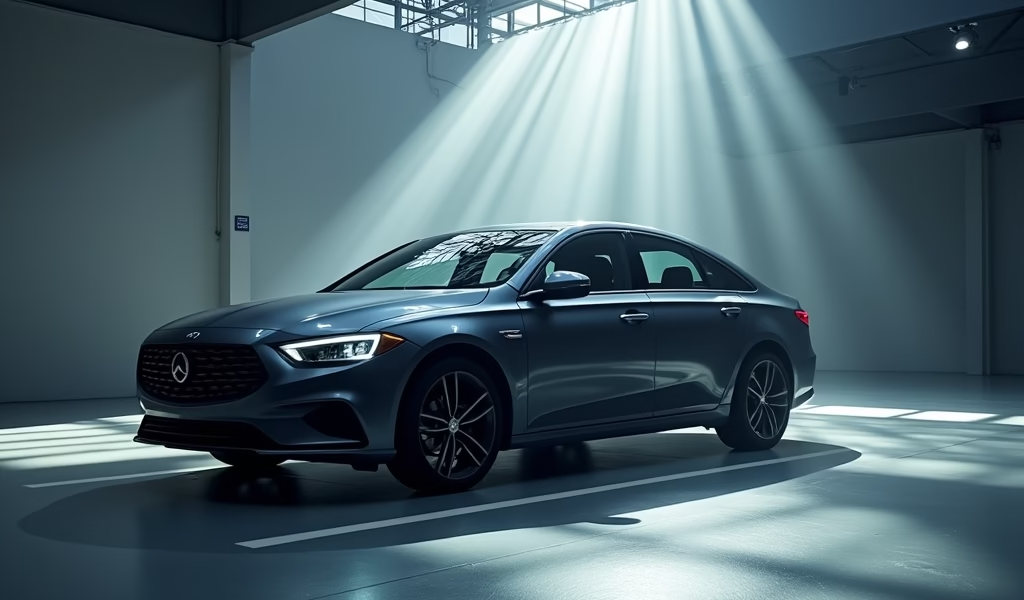Overview
Zero percent financing for 72 months on car purchases offers the benefit of interest-free loans but comes with significant qualifying requirements and potential hidden costs like higher vehicle prices and the inability to combine with cash rebates. While these deals eliminate interest payments completely, consumers need to carefully consider alternatives, negotiation strategies, and timing their purchase during model transitions or end-of-quarter periods to determine if the offer truly provides the best overall value for their specific financial situation.
Table of Contents
- Understanding Zero Percent Financing
- How Zero Percent Financing Works
- Qualifying for Zero Percent Financing
- Pros of Zero Percent Financing
- Cons and Hidden Catches
- Alternatives to Consider
- Negotiating Strategies
- Best Times to Find Zero Percent Deals
- Making the Final Decision
- Conclusion
- Frequently Asked Questions
Understanding Zero Percent Financing
When it comes to 0 percent financing for 72 months cars, we’re talking about what seems like automotive magic – borrowing money for a brand-new vehicle without paying a single penny in interest over six years. As a mechanic who’s seen countless customers struggle with car payments, I’ve witnessed firsthand how these deals can be life-changing… or wallet-draining, depending on how you navigate them.
Think of 0 percent financing as the automotive equivalent of finding a unicorn – rare, beautiful, and something everyone’s searching for. These manufacturer-sponsored incentives allow qualified buyers to finance a vehicle through the automaker’s financial arm (like Ford Credit or Honda Financial) at literally zero interest for up to 72 months.
I remember helping my neighbor Tom, a retired teacher, who proudly drove home in a new sedan with 0 percent financing. “It’s like they’re practically paying me to take this car,” he joked. While not entirely accurate, his enthusiasm highlights the appeal of these offers. But beneath the shiny exterior of 0 percent financing lies a complex engine of financial considerations that every prospective car buyer should understand.
How Zero Percent Financing Works
At its core, 0 percent financing for 72 months cars operates like a standard car loan, but with the interest meter permanently stuck at zero. Automakers aren’t suddenly feeling generous – these programs are carefully calculated marketing tools designed to move inventory while still maintaining profitability.
Here’s what’s happening under the hood: When manufacturers offer these deals, they’re essentially subsidizing what would normally be the interest cost. The financing comes through the manufacturer’s captive finance company, not through traditional banks or credit unions who would never dream of loaning money without making a profit on interest.
The math is refreshingly simple: If you finance a $30,000 vehicle at 0 percent for 72 months, your monthly payment is exactly $416.67 ($30,000 divided by 72 months). No compounding interest, no changing payment amounts – just the purchase price spread evenly across 72 months.

Qualifying for Zero Percent Financing
Now, here’s where the rubber meets the road – qualifying for these golden offers. Much like how I can instantly diagnose a perfectly maintained engine, finance companies can spot a pristine credit report from a mile away. And that’s exactly what you’ll need for 0 percent financing.
To qualify for 0 percent financing for 72 months cars, you’ll typically need:
- A credit score in the “excellent” range (usually 720 or higher)
- Stable employment history
- A manageable debt-to-income ratio (typically below 40%)
- Possibly a larger down payment than with standard financing
I’ve seen many disappointed faces in the dealership when customers discover their 680 credit score won’t cut it for the advertised 0 percent deal. According to Experian’s automotive financing data, only about 18% of car buyers actually qualify for the best promotional rates. It’s like having all the tools to fix an engine except the one special wrench you need – frustrating but not uncommon.
The qualification process is deliberately selective because these offers represent significant financial investments from the manufacturers. When you’re buying a new car, it pays to check your credit reports and scores several months before shopping, giving yourself time to address any issues.
Pros of Zero Percent Financing
Let’s pop the hood on the benefits of 0 percent financing for 72 months cars, because there are some genuine advantages that make these deals worth pursuing:
The most obvious benefit is the complete absence of interest payments. On a $30,000 car loan at 5% interest over 72 months, you’d pay around $4,800 in interest. With a 0 percent deal, that’s $4,800 staying in your pocket – enough for several years of maintenance, upgrades, or simply peace of mind.
These deals also provide predictable budgeting. Your payment amount never changes, making financial planning simpler. It’s like having a car with perfect, consistent fuel economy – you always know exactly what to expect.
Another advantage is the opportunity to buy more car than you might otherwise afford. That higher trim level or those advanced safety features might now fit within your monthly budget. As someone who’s seen how modern safety features can prevent accidents and save lives, I consider this a significant benefit.
Additionally, with inflation being what it is, paying with tomorrow’s potentially less valuable dollars without any interest penalty is economically advantageous. It’s essentially like getting a small discount on your purchase with each passing year.
For disciplined savers, 0 percent financing opens another door: instead of making a large down payment, you could invest that money elsewhere while making interest-free payments on the vehicle. I’ve seen clients put their down payment money into home improvements or retirement accounts instead, effectively making their money work in two places at once.
Cons and Hidden Catches
Just as I warn my customers about shiny quick-fix products that claim to solve all engine problems, I need to caution you about the potential downsides of 0 percent financing for 72 months cars. There’s always fine print worth reading.
First, these offers typically apply only to specific models – often those that aren’t selling well or are being phased out. That shiny new redesigned model? It’s probably not eligible. Manufacturers use these promotions strategically to clear inventory of less popular vehicles or last year’s models.
You might also face an “either/or” situation: either take the 0 percent financing OR take the cash rebate, but not both. Sometimes that $3,000 rebate is actually more valuable than the interest savings, especially if you plan to pay off the car early or can secure a low interest rate elsewhere.
The 72-month term itself can be problematic. That’s six years – longer than most people keep their vehicles. You could find yourself underwater (owing more than the car is worth) for a significant portion of the loan period. I’ve seen too many customers stuck in vehicles they’ve grown to dislike simply because they couldn’t afford to get out from under them.
Another hidden catch: these deals may come with higher vehicle prices. Dealers know you’re focused on the financing terms and might be less aggressive in negotiating the actual purchase price. As the saying goes in the industry, “buyers focus on monthly payments while dealers focus on total profit.”

Alternatives to Consider
Before you set your heart on 0 percent financing for 72 months cars, it’s worth exploring other paths that might actually lead to a better destination for your financial journey.
One alternative is taking the manufacturer’s cash rebate and securing financing through a credit union. Credit unions often offer rates 1-2 percentage points lower than conventional banks. I’ve seen customers save more overall by taking a $3,500 rebate and financing at 2.9% than they would have with the 0 percent offer.
Consider a shorter loan term with a low interest rate. A 48-month term at 1.9% might result in higher monthly payments but could save you money if you typically trade in vehicles before six years. It’s like choosing synthetic oil that costs more per change but extends your engine’s life – sometimes paying a bit more upfront is the smarter long-term strategy.
Another option is leasing, especially if you enjoy having a new vehicle every few years. While leasing has its own considerations, the monthly payments are typically lower than purchasing, and you avoid the negative equity trap that can come with long-term financing.
For the truly patient, saving up and paying cash remains the ultimate financing alternative. I’ve noticed that my cash-paying customers tend to be more deliberate in their vehicle selections and often negotiate better overall deals. When deciding where to buy a car, cash in hand can give you leverage at smaller, independent dealerships especially.
Negotiating Strategies
Approaching a 0 percent financing deal requires the same careful strategy as diagnosing an intermittent engine problem – methodical, informed, and patient.
First, do your homework before setting foot in the dealership. Know the invoice price (what the dealer paid), the fair market value, and all available incentives for your target vehicle. Websites like Edmunds’ True Cost to Own calculator can provide valuable benchmarks.
Always negotiate the purchase price of the vehicle before mentioning financing. Once the dealer knows you’re interested in their 0 percent offer, they may be less willing to budge on the vehicle price. It’s like revealing your hand in poker too early – strategically unwise.
Get pre-approved for financing from an outside lender before shopping. This accomplishes two things: it gives you a backup option and provides leverage when discussing the dealer’s financing offers. I’ve seen customers use a pre-approval letter to negotiate dealer rates down even further.
Run the numbers on all scenarios. Sometimes taking a manufacturer rebate and financing at a low (but not zero) interest rate results in a better deal. Ask the dealer to show you the total cost comparison between 0 percent financing and the rebate option.
Don’t forget to negotiate other aspects of the deal. Extended warranties, maintenance packages, and other add-ons are all profit centers for dealers and have negotiable margins. Even with 0 percent financing, these extras can significantly impact your total cost.
Best Times to Find Zero Percent Deals
Timing your purchase can dramatically improve your chances of snagging a 0 percent financing for 72 months cars deal. It’s similar to knowing the perfect time to change your timing belt – there’s an optimal window that savvy owners recognize.
End-of-month shopping can yield better financing offers as dealers scramble to meet monthly quotas. But for truly spectacular deals, focus on these prime periods:
- Model year transitions (typically August-October)
- End of calendar year (December)
- Holiday weekends (Memorial Day, Labor Day, Black Friday)
- End of each quarter (March, June, September, December)
Manufacturers tend to roll out their most aggressive financing incentives when they need to clear inventory for new models or meet quarterly sales goals. During these periods, even buyers with slightly less-than-perfect credit might find themselves qualifying for these premium offers.
Economic downturns also frequently trigger zero percent offers as automakers struggle to maintain sales volume. During the 2020 pandemic, for instance, we saw an unprecedented wave of 0 percent financing deals as manufacturers fought to keep sales flowing during uncertain times.
Another insider tip: watch for “conquest” offers targeting owners of competing brands. If you currently drive a Honda and Toyota is offering special financing to Honda owners who switch, you might qualify for preferential terms that aren’t advertised to the general public.
Making the Final Decision
When weighing whether 0 percent financing for 72 months cars is right for you, consider your complete financial picture, not just the appealing zero interest rate.
First, assess your long-term plans for the vehicle. If you typically keep cars for 8+ years, the 72-month term makes sense. However, if you prefer upgrading every 3-4 years, you might find yourself trapped in negative equity – owing more than the car is worth when you want to trade it in.
Consider your overall debt load carefully. Even at 0 percent, a car payment is still an obligation that affects your debt-to-income ratio and could impact your ability to qualify for other loans, like mortgages. I’ve seen customers prioritize the 0 percent car loan only to be denied a home loan months later.
Analyze your opportunity costs. Could the money required for the down payment earn better returns elsewhere? With 0 percent financing, you might be better off making a minimal down payment and investing the difference, especially if you have access to retirement accounts or other tax-advantaged investment vehicles.
Don’t overlook insurance costs, which tend to be higher on newer vehicles. A comprehensive car buying guide will remind you to factor in all ownership costs, not just the monthly payment.
Finally, trust your instincts. If a deal seems too complicated or the salesperson is rushing you, take a step back. The best financial decisions rarely happen under pressure. As I tell my customers about both cars and their financing: if it doesn’t feel right, it probably isn’t.
Conclusion
Zero percent financing for 72 months cars represents one of the most attractive offers in the automotive world – when approached with the right knowledge and circumstances. Like a perfectly tuned engine, these deals can perform beautifully when all components align properly.
The key takeaway is that while 0 percent financing eliminates interest costs, it doesn’t automatically make it the best financial choice for everyone. Your credit profile, negotiation skills, timing, and personal financial situation all play crucial roles in determining whether these offers truly benefit you.
Remember that dealerships and manufacturers aren’t offering these deals out of generosity – they’re carefully calculated business decisions designed to sell vehicles while maintaining profitability. By understanding both the visible and hidden aspects of these financing offers, you position yourself to make truly informed decisions.
As a mechanic who’s seen countless customers struggle with car payments they later regretted, I encourage you to look beyond the alluring “0 percent” in the advertising and consider your complete financial picture. The best deal isn’t always the one with the lowest interest rate – it’s the one that best fits your specific needs, preferences, and long-term financial health.
With the right approach, you can potentially drive away in a new vehicle with genuinely advantageous financing terms that will serve you well for years to come – just like a properly maintained engine that runs smoothly mile after mile.
Frequently Asked Questions
Who typically qualifies for 0 percent financing offers?
Buyers with excellent credit scores (typically 720+ or even higher) and strong overall financial profiles are most likely to qualify. Manufacturers reserve these premium offers for their most creditworthy customers.
Can I negotiate the purchase price with 0 percent financing?
Yes, always negotiate the purchase price independently before discussing financing options. Dealers may be less flexible on price if you reveal your interest in special financing too early.
Is it better to take the cash rebate or the 0 percent financing?
It depends on the specific rebate amount, loan term, and current interest rates. Calculate the total cost of both scenarios to determine which saves you more money in your specific situation.
Will 0 percent financing affect my credit score?
The financing itself won’t impact your score differently than any other auto loan. However, multiple credit applications during car shopping may temporarily lower your score, so it’s best to complete your shopping within a 14-day window.
Can I pay off a 0 percent loan early without penalties?
Most 0 percent loans don’t have prepayment penalties, but always check the contract carefully. Since you’re not paying interest, there’s less financial incentive to pay off early unless you’re planning to sell the vehicle.


Pingback: 0 APR Cars: Proven Maintenance Tips - knowsyourcar.com
Pingback: 0 finance car deals: 5 Maintenance Musts - knowsyourcar.com